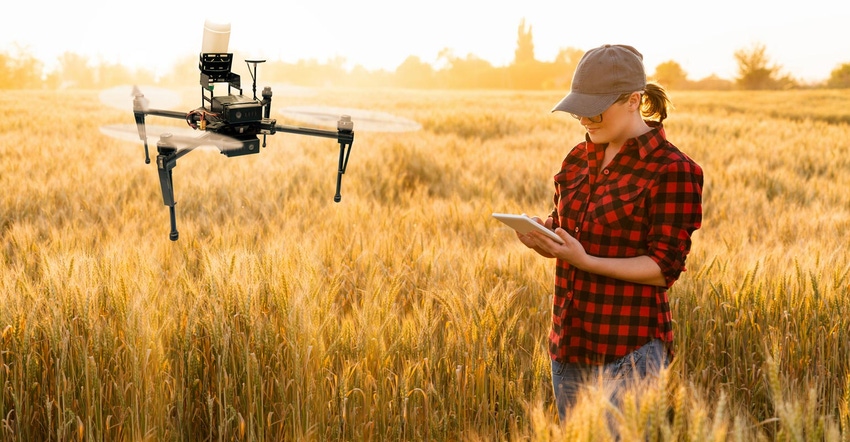September 29, 2020

A survey of North Dakota farmers shows which precision agriculture technologies they have adopted. The technologies and the percentage of respondents using them are:
Autosteer and global positing systems — 60%
Automatic section control — 53%
Variable-rate nitrogen application — 34%
Variable-rate seeding — 27%
Satellite imagery — 15%
Unmanned aircraft systems — 7%
The survey was conducted by the North Dakota State University Agribusiness and Applied Economics Department.
Size matter
Survey results showed that larger operations are more likely than smaller ones to adopt precision agriculture technologies, according to Erik Hanson, NDSU Agribusiness and Applied Economics Department assistant professor.
Compared with smaller operations, operations with at least 2,000 crop acres were 46% more likely to have adopted automatic section control; 40% more likely to have adopted autosteer and global positioning systems; 20% more likely to have adopted satellite imagery; 41% more likely to have adopted variable-rate nitrogen application; and 28% more likely to have adopted variable-rate seeding.
The survey also found connections between cropping patterns and precision agriculture technology adoption. Of the 176 crop operations analyzed, 62% grew corn, 76% grew soybeans, 74% grew wheat and 61% grew at least one other crop. (The percentages don’t add up to 100% because most operations grew more than one crop.)
Corn producers, who have higher production costs for inputs such as seed and fertilizer than producers of most other North Dakota crops, were more likely to have adopted precision agriculture technologies than other producers.
Survey numbers
The survey was conducted in 2018. Survey responses were received from 453 individuals, 176 of who were active decision makers on operations that grew crops.
The responses of the active decision makers were used in this report.
Source: NDSU, which is solely responsible for the information provided and is wholly owned by the source. Informa Business Media and all its subsidiaries are not responsible for any of the content contained in this information asset.
Read more about:
PrecisionYou May Also Like




